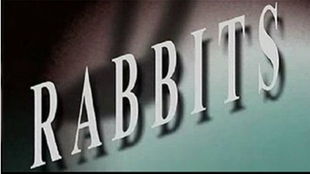
Content:
Introduction: Fishing in the forest can be an exhilarating and rewarding experience. With the serene beauty of nature surrounding you, the tranquility of the forest can enhance your fishing adventure. However, fishing in the forest requires a different set of techniques compared to traditional fishing in lakes or rivers. In this article, we will explore the essential techniques for successful fishing in the forest, ensuring that you make the most out of your fishing trip.
Choosing the Right Location: The first step in fishing in the forest is to select the perfect location. Look for areas where water bodies, such as streams, ponds, or lakes, are present. These water bodies can provide abundant fish populations. Keep in mind that the best spots are often hidden, so explore different areas and ask locals for recommendations.
Understanding the Forest Ecosystem: To be successful in fishing in the forest, it is crucial to understand the local ecosystem. Different types of forests have different fish species and water conditions. Research the specific forest you will be visiting to gain insights into the fish species that inhabit the area. This knowledge will help you choose the appropriate bait and tackle.
Timing and Weather Conditions: Timing is everything when it comes to fishing in the forest. Fish are more active during certain times of the day, typically early morning or late evening. Additionally, consider the weather conditions. Overcast days or mild rain can stimulate fish activity. Plan your fishing trip accordingly to increase your chances of success.
Selecting the Right Equipment: Fishing in the forest requires specialized equipment. Here are some essential items to consider:
a. Rod and Reel: Choose a lightweight rod and reel suitable for the fish species you are targeting. A medium-action rod is often recommended for versatility.
b. Line: Use a monofilament line with a suitable breaking strength. In the forest, you may encounter snags and obstacles, so a line that can withstand pressure is essential.
c. Hooks: Select hooks that match the size and type of bait you plan to use. Small hooks are ideal for delicate fish species, while larger hooks are suitable for larger fish.
d. Lures and Bait: Research the local fish species and their preferences. Use natural bait, such as worms, insects, or small fish, or artificial lures that mimic their prey.
Presenting the Bait: In the forest, fish may be more cautious and less likely to bite. Here are some techniques to improve your chances:
a. Patience: Be patient and allow your bait to sink naturally. Avoid jerking or twitching the rod excessively, as this can spook the fish.
b. Cast in the Right Direction: Cast your line in a way that allows your bait to land gently in the water. Avoid casting directly over fish, as this can scare them away.
c. Adjust Your Technique: Depending on the fish species, you may need to adjust your technique. For example, some fish species may be more attracted to slow, steady retrieves, while others prefer erratic movements.
Reading the Water: Understanding the water's flow and currents is crucial when fishing in the forest. Fish often gather in areas with slower currents or in deeper sections. Observe the water's movement and cast your bait accordingly.
Handling and Storing Fish: Once you have caught a fish, it is important to handle and store it properly. Here are some tips:
a. Use a Net: Use a fish net to gently scoop the fish out of the water. This minimizes stress on the fish and reduces the risk of injury.
b. Keep the Fish Alive: If you plan to release the fish, ensure that it is kept in the water until it is ready to swim away. If you plan to keep the fish, handle it carefully and release it back into the water as soon as possible.
Conclusion: Fishing in the forest can be a memorable and enjoyable experience. By understanding the forest ecosystem, selecting the right equipment, and employing effective techniques, you can increase your chances of success. Remember to respect the natural environment and practice ethical fishing principles. Happy fishing!












